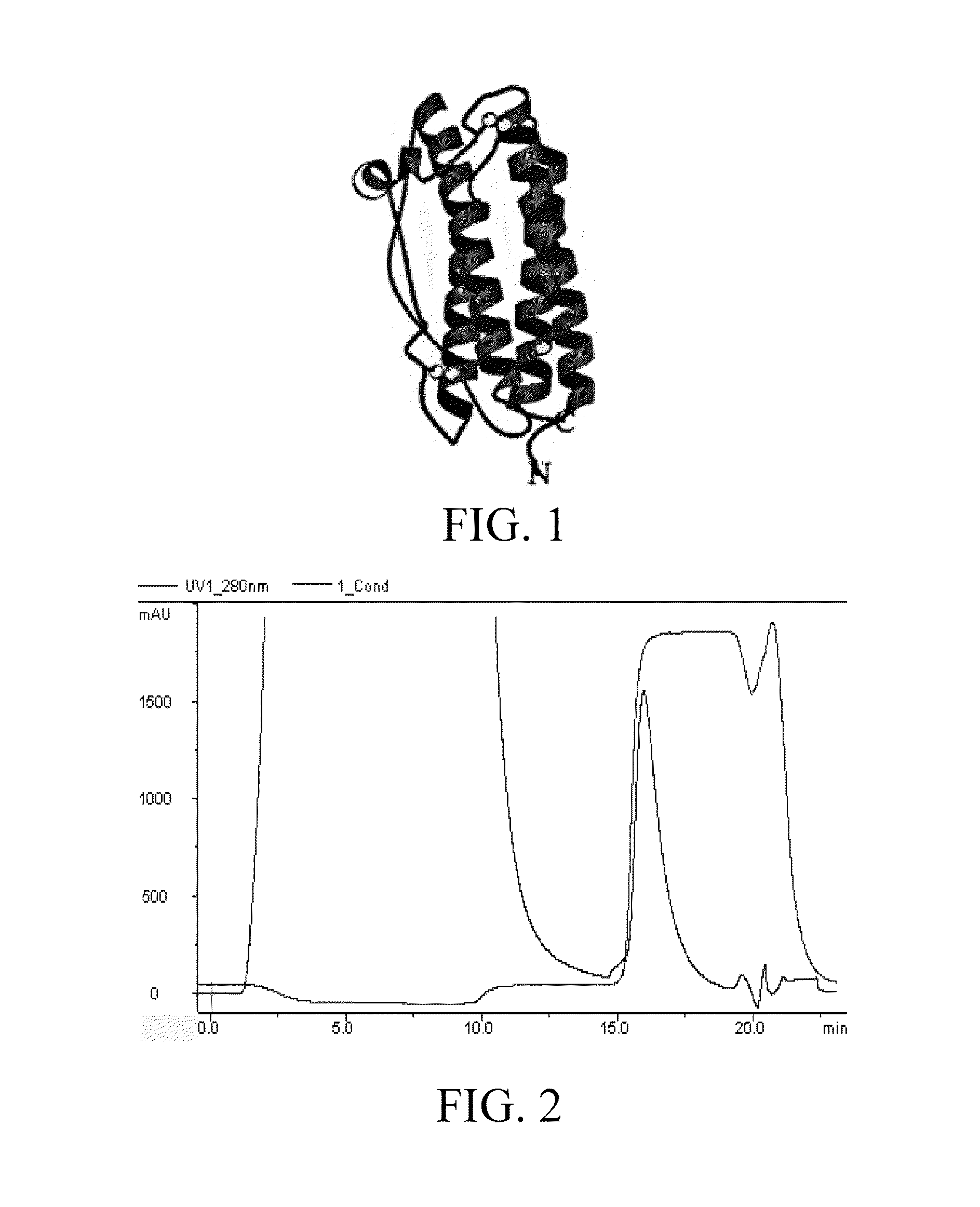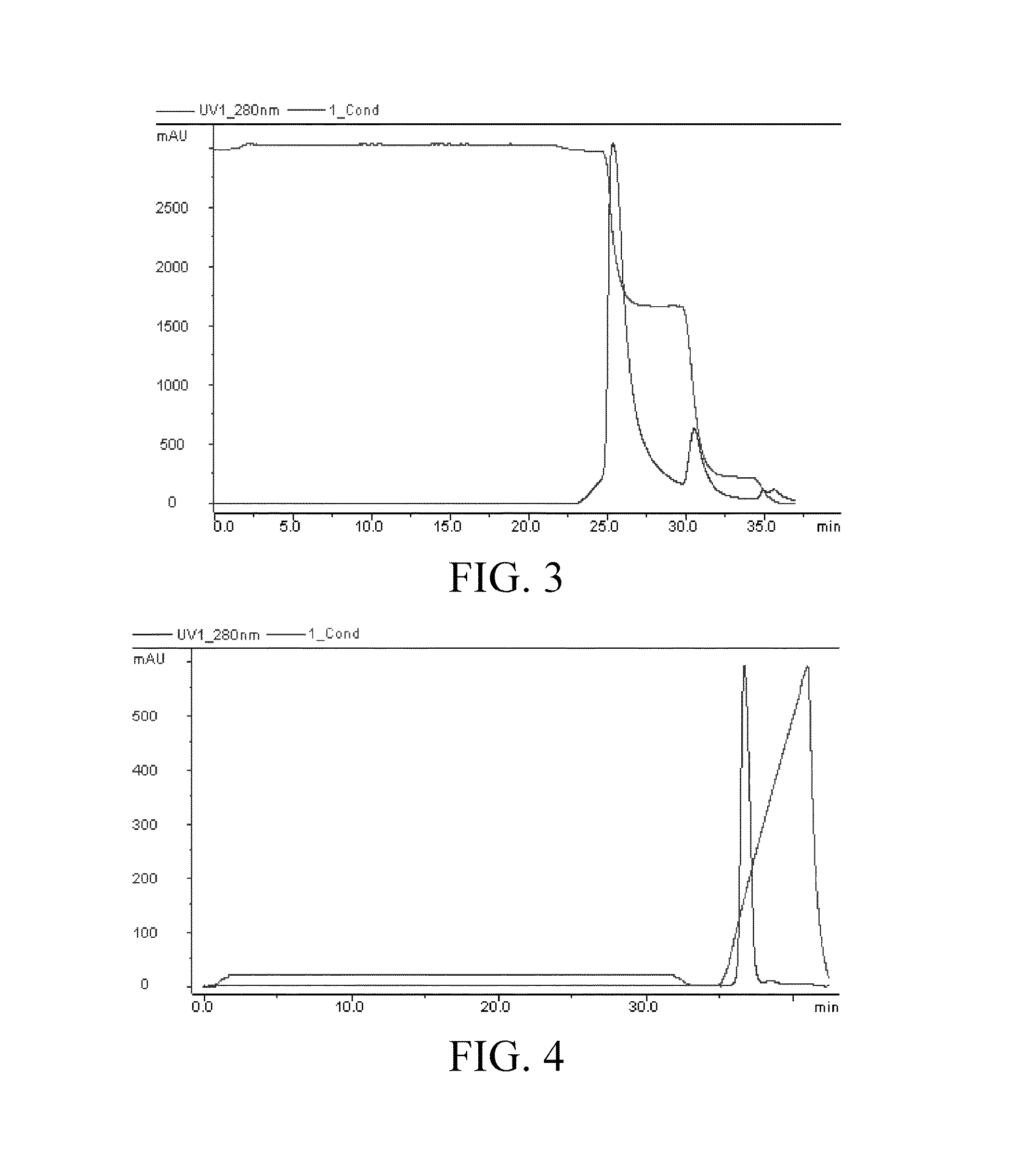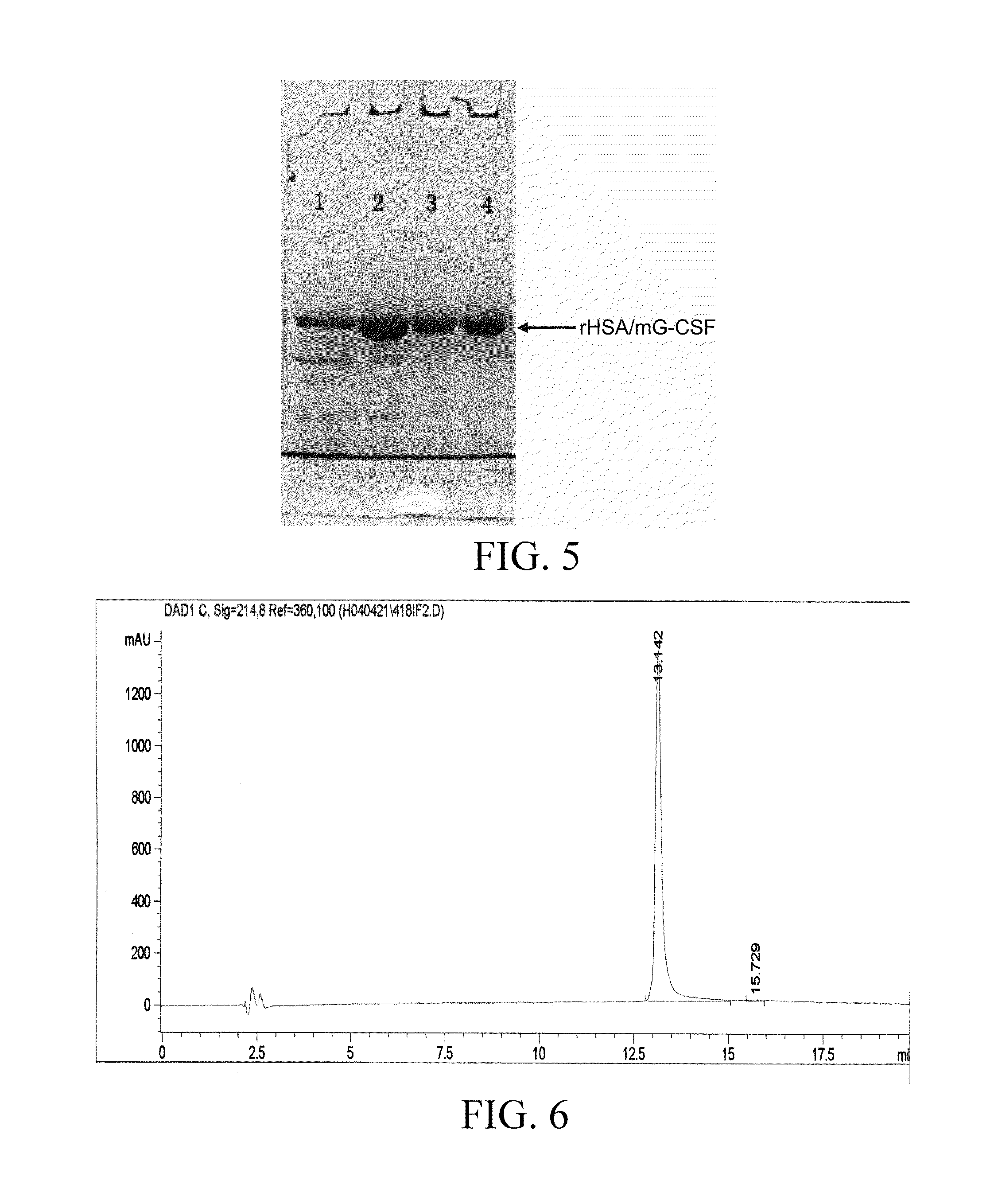Mutant G-CSF fusion protein, and preparation and use thereof
a fusion protein and gcsf technology, applied in the field of new fusion proteins, can solve the problems of limited improvement, application of existing g-csf which has relatively prolonged half-live, and the circulation half-life of recombinant g-csf is quite short, so as to accelerate the restoration of normal levels of neutrophils, improve the effect of g-csf, and increase the activity in vivo
- Summary
- Abstract
- Description
- Claims
- Application Information
AI Technical Summary
Benefits of technology
Problems solved by technology
Method used
Image
Examples
embodiment 1
Screening of Mutated Sites
[0060]Numerous related amino acid residues located on the G-CSF receptor binding interface were mutated, to construct numerous rHSA / G-CSF mutants, in which except for the sequence differences, the mutants were constructed using the same method as that in Embodiment 2. The mutants were expressed in Pichia pastoris (the expression and purification method were as described in Embodiments 3-5); and for the obtained mutants, the ligand-receptor affinity was determined by using surface plasma resonance (SPR) technology, and a biological activity test at cellular level was conducted. Through the SPR technology, an association rate constant and a disassociation rate constant were obtained, and thus a ligand-receptor equilibrium disassociation constant was directly determined. The larger the equilibrium disassociation constant was, the lower the ligand-receptor affinity was (Zhou et al, Biochemistry, 32:8193-8198, 1993; Faegerstram and Osh annessy, In handbook of Af...
embodiment 2
Construction of Yeast Expression Strain of rHSA / G-CSF and Mutant rHSA / mG-CSF
[0066]On the basis of the research in Embodiment 1, the mutants were further optimized, and finally an optimized strain having a low affinity to the receptor, a long half-life, and a high activity was screened. In the strain, site substitutions T1A, L3T, G4Y, P5R, K34H, L35I, K40H, and L41I occurred. The strain was constructed as follows.
[0067]The DNA sequences encoding HSA / G-CSF (see SEQ NO:5) and HSA / mG-CSF (see SEQ NO: 6) were synthesized by Invitrogen (Shanghai) Corporation, and then inserted into pMD18-T(TaKaRa), to construct plasmids HSA / G-CSF / pMD18-T and HSA / mG-CSF / pMD18-T. HAS carried a natural signal peptide sequence, before which a BamHI site was added, and an EcoRI site was added at 3′ end of G-SCF.
[0068]Plasmids HSA / G-CSF / pMD18-T and HSA / mG-CSF / pMD18-T were double digested with BamHI / EcoRI, to respectively isolate HSA / G-CSF and HSA / mG-CSF fragments, which were respectively attached to the pPIC9 p...
embodiment 3
Screening of rHSA / G-CSF and Mutant rHSA / mG-CSF
[0070]The single colony of recombinant yeasts transformed in Embodiment 2 was grown in the 10 ml BMGY medium (1% yeast extract, 2% peptone, 100 mM potassium phosphate, pH 6. 0, 1. 34% YNB, 4×10−5% biotin, and 1% glycerin), incubated in a shaking incubator (250 rpm) for 24 hrs at 30° C., decant the supernatant after overnight. The supernatant was discarded, 10 ml of BMMY liquid culture medium (1% yeast extract, 2% peptone, 100 mM potassium phosphate, pH 6. 0, 1. 34% YNB, 4×10−5% biotin, and 1% methanol) containing 1% methanol was added, and induced for 72 hrs at 30° C. at 250 rpm, during which methanol was supplemented once every 24 hrs. Starting from time 0, 1 ml of induced yeast solution was sampled every 10 hrs, added into a 1. 5 ml centrifuge tube, and centrifuged for 5 min at 5000 g. 10 μl 5× Loading buffer was added into 40 μl of the supernatant, heated in a boiling water bath for 5 min, and analyzed by 12% SDS-PAGE. The expression ...
PUM
| Property | Measurement | Unit |
|---|---|---|
| concentration | aaaaa | aaaaa |
| pH | aaaaa | aaaaa |
| time | aaaaa | aaaaa |
Abstract
Description
Claims
Application Information
 Login to View More
Login to View More - R&D
- Intellectual Property
- Life Sciences
- Materials
- Tech Scout
- Unparalleled Data Quality
- Higher Quality Content
- 60% Fewer Hallucinations
Browse by: Latest US Patents, China's latest patents, Technical Efficacy Thesaurus, Application Domain, Technology Topic, Popular Technical Reports.
© 2025 PatSnap. All rights reserved.Legal|Privacy policy|Modern Slavery Act Transparency Statement|Sitemap|About US| Contact US: help@patsnap.com



